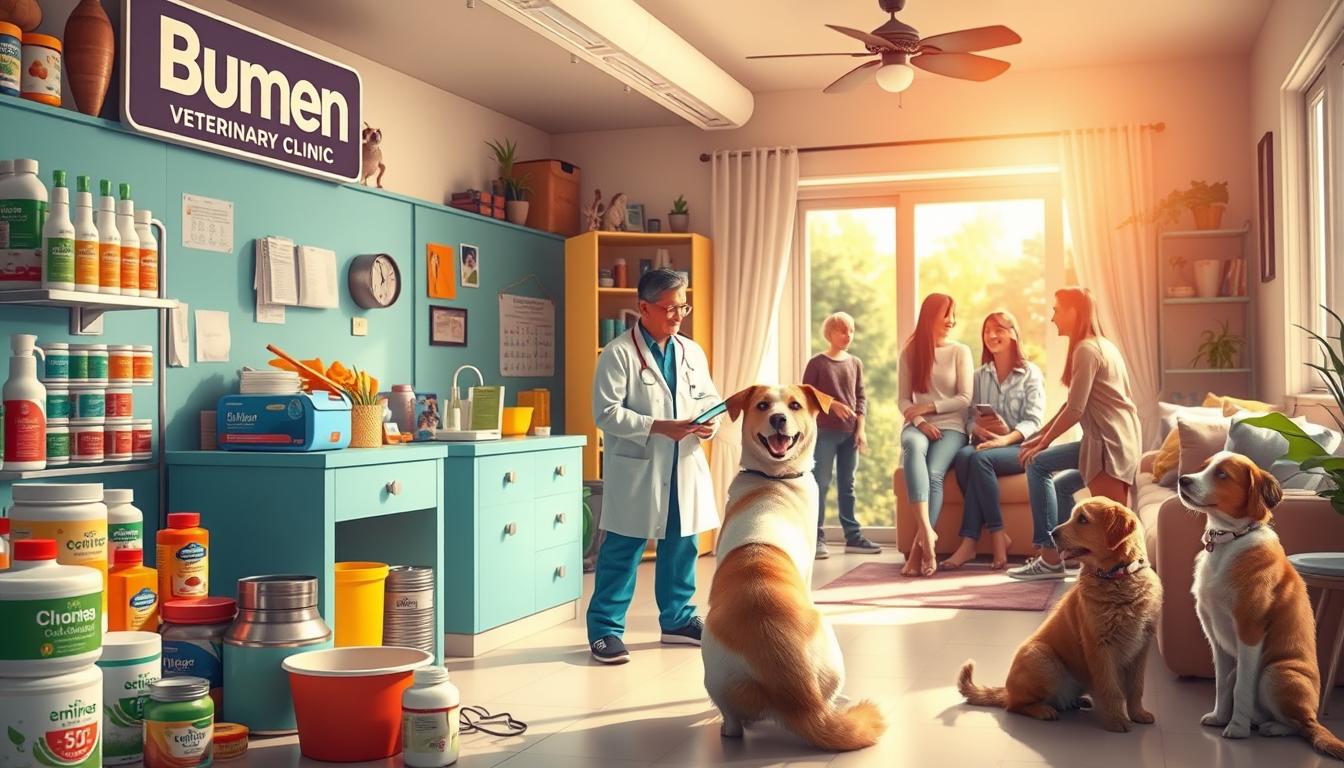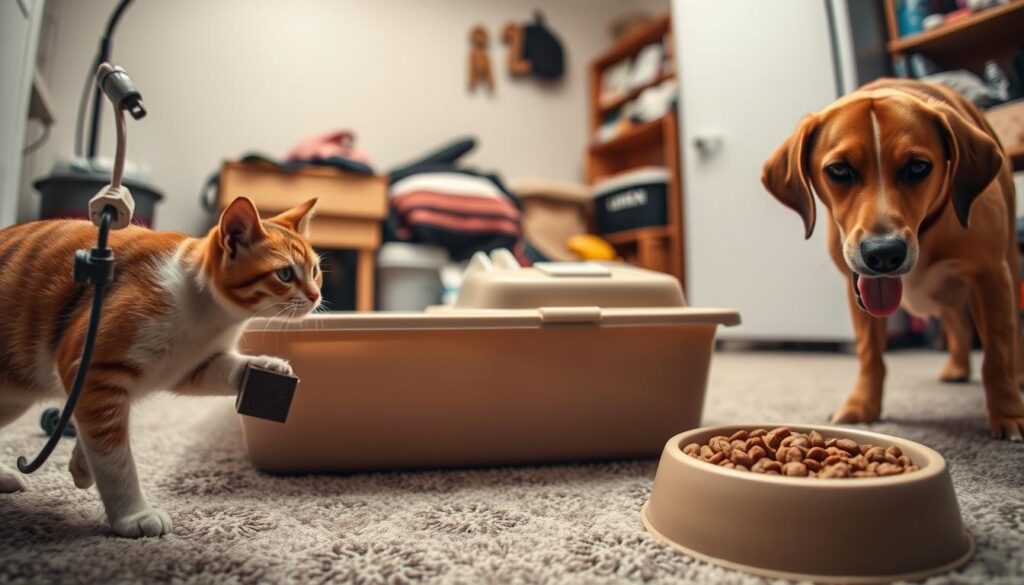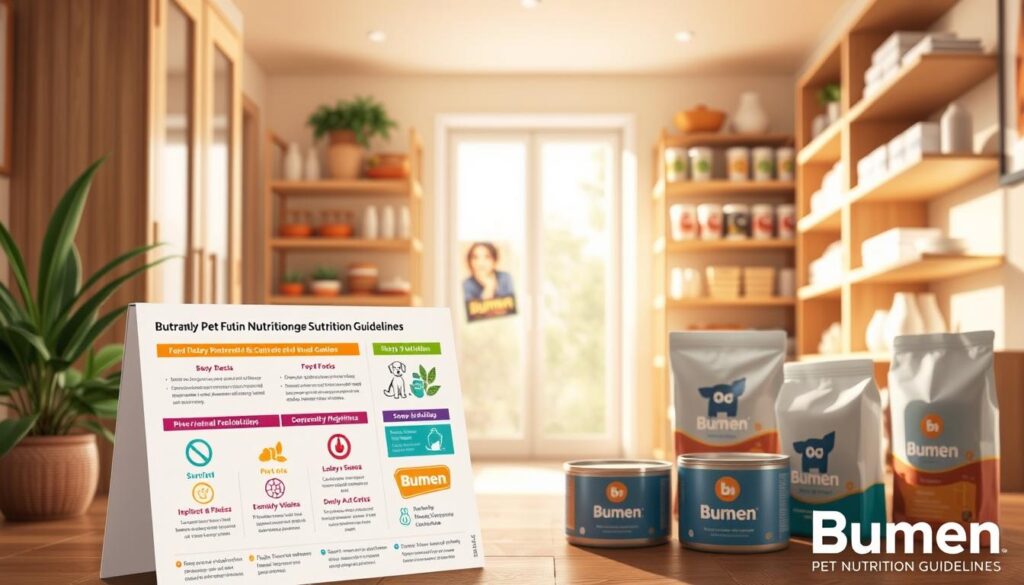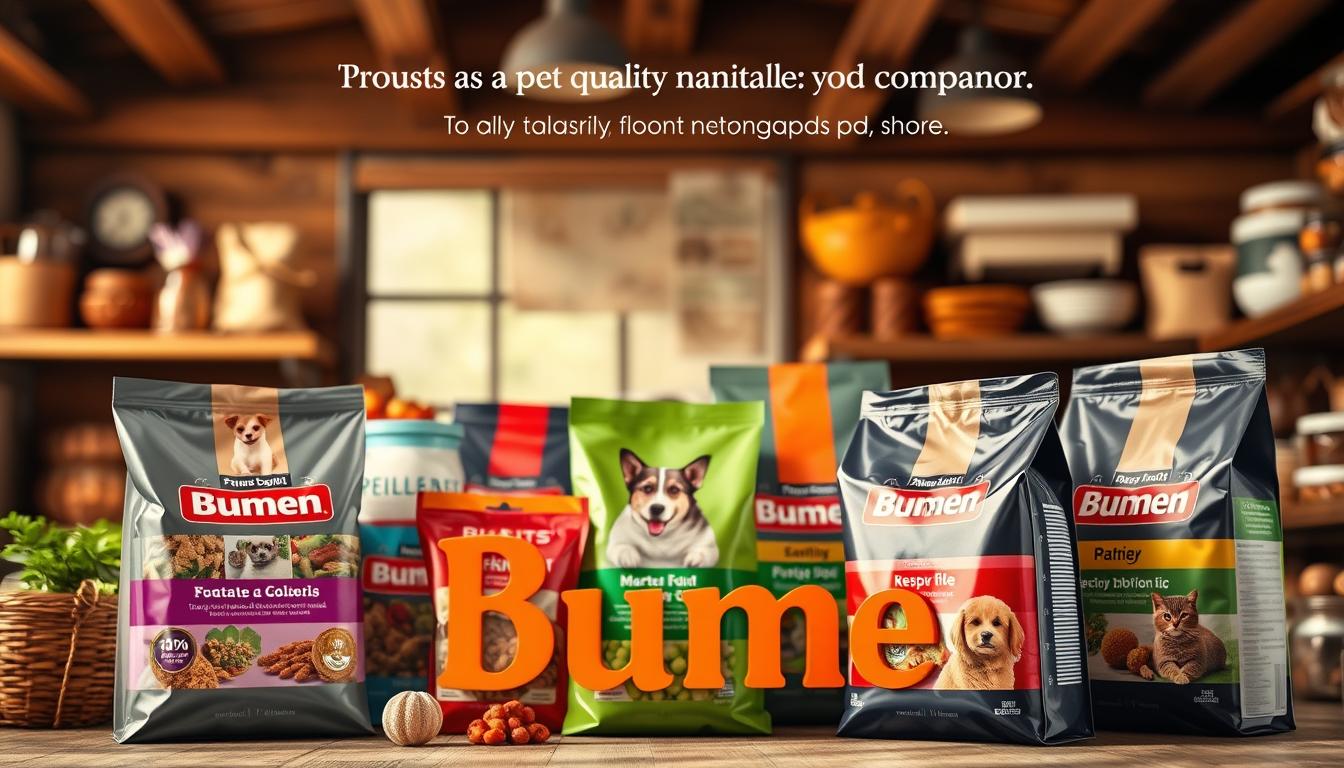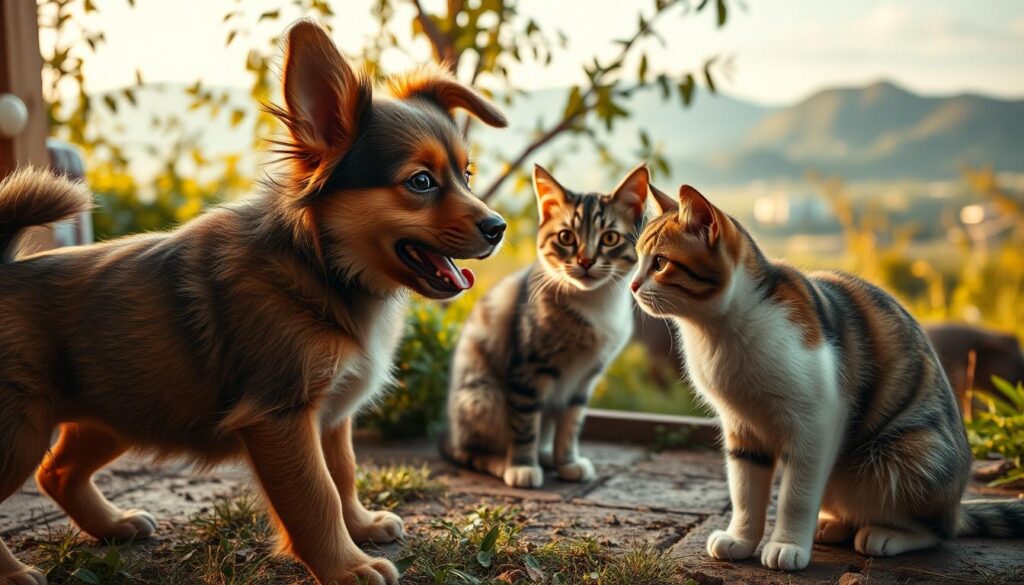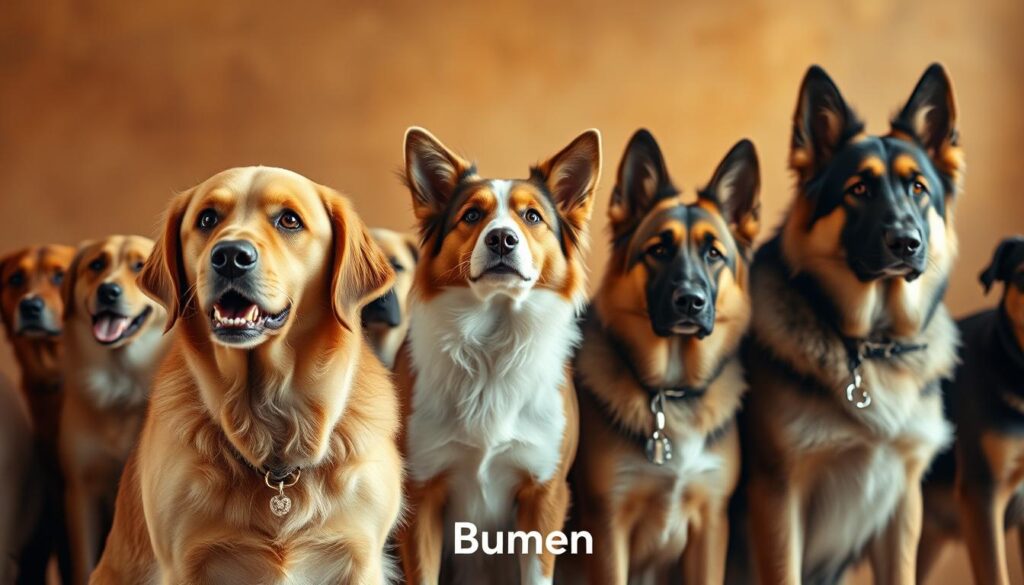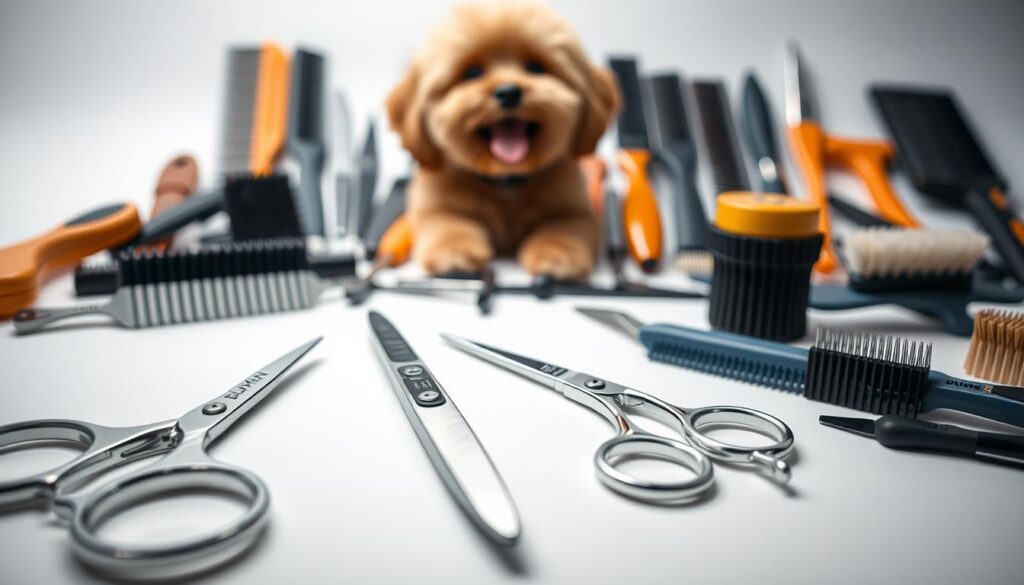Ever wondered why some pets obey instantly while others ignore commands completely? The secret lies in the best training techniques for puppies & kittens that align with their instincts. Whether you’re a first-time owner or tackling training challenges, this guide offers proven strategies to build a loving, respectful partnership with your new companion.
Training isn’t just about teaching “sit” or “come.” It’s the foundation for a happy home. Discover how effective pet training strategies can turn chewing, scratching, or wandering into manageable moments. Every lesson strengthens trust and reduces stress for both you and your pet.
From the first week home to lifelong habits, this article breaks down steps to create a calm, obedient pet. You’ll learn what rewards work, when to correct behavior, and how to avoid common mistakes. Ready to see the difference clear communication and patience can make? Let’s start training smarter, not harder.
Understanding Pet Training Fundamentals: Setting You Up for Success
Building a strong foundation starts with understanding key principles. Early training creates habits that last a lifetime. Puppies and kittens learn fastest during their first few months. This makes it the ideal time to start their training.
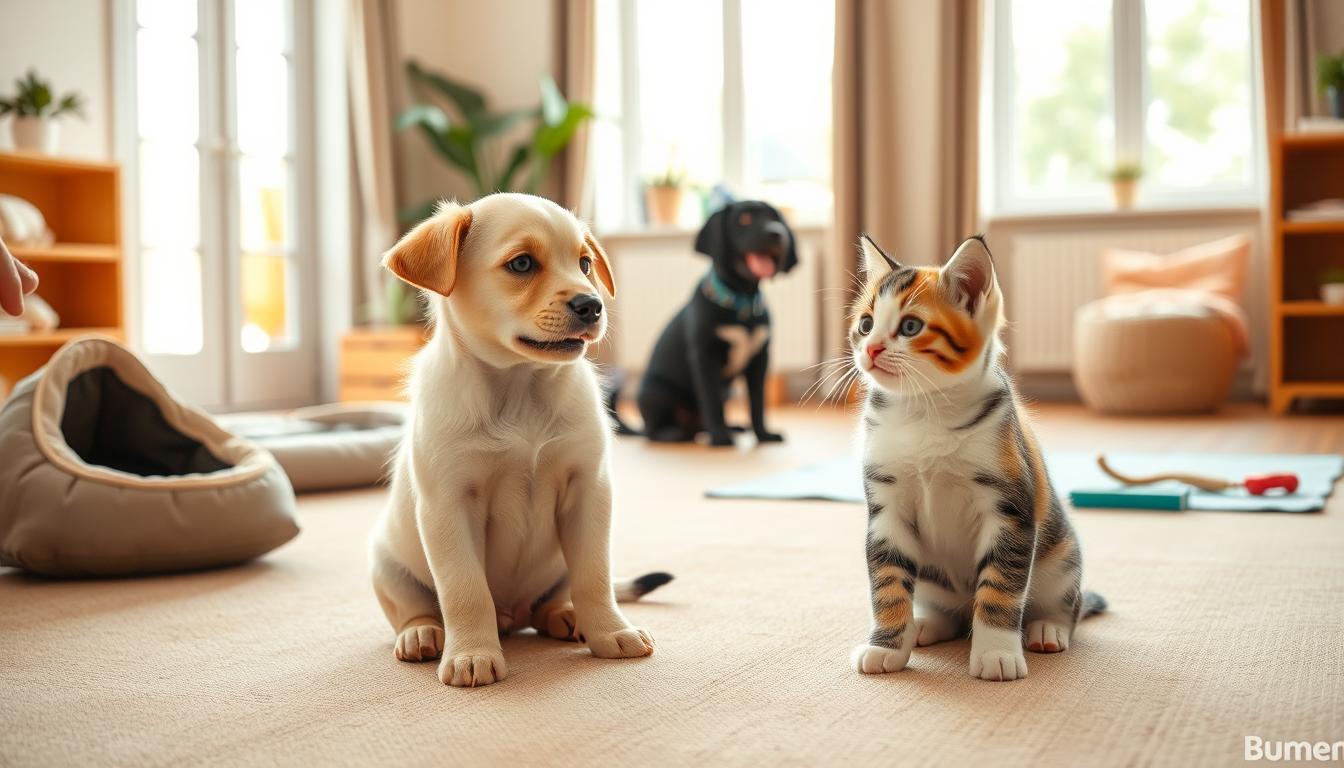
Why Early Training Matters for Both Puppies and Kittens
Puppies and kittens soak up information like sponges in their first four months. Teaching them basic commands during this time builds trust. It also prevents future issues like aggression or anxiety.
For example, puppy training techniques focused on socialization at 8–16 weeks help pets adapt to new experiences. Kitten training methods addressing scratching or litter box use early on avoid lifelong habits.
The Psychology Behind Effective Pet Training
- Classical conditioning: Linking positive experiences to commands (like treats at the sound of “sit”).
- Operant conditioning: Rewarding desired actions immediately. Praise when a puppy stops jumping, or a kitten uses a scratching post.
- Consistency is key—use the same commands and rewards every time.
Establishing Realistic Expectations and Timelines
Learning timelines vary. Puppies may master “come” in 2–3 weeks with daily 10-minute sessions. Kittens might take longer for litter training, needing 3–4 weeks. Celebrate small wins—progress happens gradually. Remember, patience trumps speed.
Every pet is unique. Some may grasp commands faster, others need more repetition. Stay calm and adjust methods as needed. You’re not alone—many resources and vet-recommended guides help tailor approaches to your pet’s needs.
Best Training Techniques for Puppies & Kittens: Core Methods That Work
Effective best training techniques for puppies & kittens start with knowing their learning styles. Puppies love routine and hands-on activities. Kittens do well with environmental clues and play. Keep training sessions short, 5-10 minutes, to keep them focused and happy.
- Clicker training: Marks desired behaviors for both species, paired with rewards.
- Target training: Teaches pets to touch a target, useful for redirecting unwanted behaviors.
- Environmental enrichment: Puzzle toys and scent trails stimulate kittens; scent marking helps puppies learn boundaries.
For obedience training for cats and dogs, adjust techniques to match their instincts. Puppies do well with leash walks and voice commands. Kittens need vertical spaces and patience during litter training. Watch for signs of tiredness, like dropped ears or avoiding eye contact, and take a break.
Timing is everything: reward them right after they do something right. Use treats like chicken for dogs or catnip mice for kittens to keep them motivated. Training should be fun and match your pet’s natural ways.
Positive Reinforcement: The Golden Standard for Pet Training
Positive reinforcement builds trust and strengthens bonds with pets. Science backs this approach, showing it changes behavior for the better without harsh methods. Start with these strategies to make training fun for both of you.
Treats and Rewards: What Works Best and When
Small, high-value treats like chicken or cheese are best. Use them during training to mark good behaviors.
- Timing matters: Reward immediately after the desired action.
- Phase out treats gradually by rewarding randomly after your pet masters a behavior.
Clicker Training for Precise Communication
Clicker training pairs a distinct sound with rewards. Follow these steps:
- Pair the click with a treat 10 times to build association.
- Click during the exact moment your puppy performs the correct behavior (e.g., sitting).
- Gradually add commands like “sit” before using the clicker.
This method works well with kittens too, using toys as rewards.
Verbal Cues and Command Consistency
Choose short, clear commands like “stay” or “come.” Use the same words every time. Pair them with gestures if needed. Make sure all family members use the same commands.
Physical Praise and Touch-Based Reinforcement
Physical rewards like belly rubs for dogs or cheek scratches for cats boost positive feelings. Tailor touch to your pet’s preferences. Some puppies love under-the-chin scratches, while kittens might prefer a gentle chin rub.
Essential Commands and Behaviors to Teach Your New Pet
Teaching your puppy or kitten basic commands is key. For dogs, sit, stay, come, and leave it are must-haves. Start with “sit” by holding a treat near their nose and moving it up. Reward them when their bottom touches the floor.
Consistency is key to building muscle memory. Kittens need commands too! Train them to come using a favorite toy or treat. Teach gentle play to stop scratching or biting early.
Leash walking without pulling takes patience. Pair “heel” with calm praise when your dog walks by your side. For cats, place a scratching post near where they nap. Reward them with catnip when they use it.
For pets, socialization tips include gradual exposure. Introduce your puppy to 5–10 new people weekly. Let kittens explore new toys under watch. Short sessions (5–10 minutes, 2–3x daily) prevent stress.
Obedience training also includes “drop it” for dogs and “litter box reliability” for cats. Use a firm “drop it” while trading a forbidden item for a treat. Kitten-proof areas with covered litter boxes to reinforce proper bathroom habits.
Track progress with a calendar—mark when your pet masters each step. Celebrate small wins!
Socialization tips for pets should start early. For puppies, start at 3–14 weeks. For kittens, start at 3–9 weeks. Expose them to sounds, surfaces, and smells in safe doses. Use baby gates to control interactions.
Remember: consistency and positivity turn these lessons into lifelong skills. Your efforts today build a well-adjusted companion for years to come.
Addressing Common Training Challenges and Behavioral Issues
Every puppy and kitten faces training hurdles. This section offers solutions for chewing, scratching, and other misbehaviors. We’ll use proven puppy training techniques and kitten training methods. Let’s tackle these challenges with patience and understanding.
Troubleshooting Puppy Problems: Chewing, Biting, and Accidents
Redirect chewing with sturdy toys like KONG or Nylabones. For biting, pause play when teeth make contact and reward gentle interactions. Accidents happen—take puppies outside immediately after meals or naps. Consistency is key.
- Offer chew toys during teething phases.
- Teach “gentle” by stopping play when biting occurs.
- Use enzymatic cleaners to remove accident odors and prevent repeats.
Managing Kitten Misbehavior: Scratching, Jumping, and Litter Training
Cats scratch to mark territory—place sisal posts near napping spots. Distract kittens from furniture with feather toys. For litter training, keep boxes clean and in quiet areas. Jumping? Ignore unwanted leaps and reward calm behavior.
- Trim claws weekly to reduce damage from scratching.
- Use double-sided tape on furniture to deter jumping.
- Choose clumping litter for kittens to encourage box use.
When to Seek Professional Help With Training
If problems persist after 2 weeks of consistent effort, consult a certified trainer. Look for Certified Professional Dog Trainers (CPDT) or IAABC-certified behaviorists. They can address severe aggression or fear-based issues you can’t resolve alone.
Creating Lifelong Learning Habits: Building on Your Training Success
Training doesn’t end when your pet learns the basics. It’s important to keep practicing to keep their skills sharp. As they grow, teach them new tricks like “leave it” or give them puzzle toys.
Short, fun training sessions are great. They keep your pet interested and help them remember what they’ve learned before.
Don’t stop socializing your pet after they’re young. Take them to parks or pet stores to meet new people and animals. This helps them feel confident and builds their social skills.
Even older pets need mental challenges. They might need slower activities, but they should keep learning. Being consistent with commands and rewards helps build trust.
By making training a lifelong habit, you strengthen your bond with your pet. Remember, patience and positive reinforcement are key at every stage.

